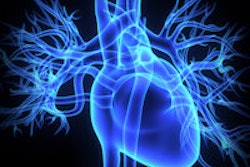Dear AuntMinnieEurope Member,
Working out exactly how best to evaluate patients with prosthetic heart valves is challenging, particularly because more than 80 models have been developed over the past 50 years.
Researchers from one of Europe's top facilities, the Erasmus Medical Center in Rotterdam, the Netherlands, have shed new light on this tricky topic, focusing specifically on dual-source CT. They presented their findings at RSNA 2015 and were rewarded with a certificate of merit. Go to our CT Community or click here.
Meanwhile, an Italian study published last week supports the possible use of CT colonography (CTC) for population screening of colorectal cancer. The data confirmed the high detection rate of screening CTC for cancer and advanced adenoma, a rate that was threefold greater than that of one round of the fecal immunochemical test and was no different on a statistically significantly basis from that of colonoscopy. Get the details here.
Comprehensive statistics and analysis on global cancer incidence and mortality rates were unveiled last month, and they're well worth a close look. You can do so by clicking here.
MRI-guided radiotherapy involves the integration of 2D observations, and it helps a practitioner direct a radiotherapy beam to where it is needed, even when critical organs are nearby and patient motion -- such as from breathing -- is an issue. What clinical progress has been made in this area? To find out, visit our MRI Community, or click here.
Finally, diffuse optical imaging is a nonionizing and relatively inexpensive alternative method for detecting breast cancers, including those in dense tissues. Now, scientists have developed a handheld optical scanner with the potential to image breast cancer in real-time. Go to the Women's Imaging Community, or click here.



















